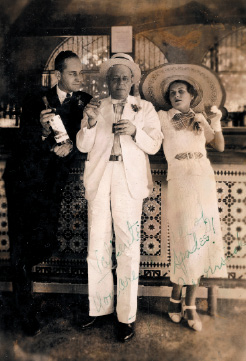 Giants have a funny ability (or, perhaps, curse?) for becoming oddly invisible–or, at least, not considered closely. Especially if that giant is a well-known, massively distributed spirit in a land where the trend is that the tinier in production and more homespun the story, the more imbibers want to sip it and hear the tale told. But everybody starts somewhere, and when you know the story of Bacardi – a name synonymous with Puerto Rican rum – it might surprise you to learn that it began on a different island entirely.
Giants have a funny ability (or, perhaps, curse?) for becoming oddly invisible–or, at least, not considered closely. Especially if that giant is a well-known, massively distributed spirit in a land where the trend is that the tinier in production and more homespun the story, the more imbibers want to sip it and hear the tale told. But everybody starts somewhere, and when you know the story of Bacardi – a name synonymous with Puerto Rican rum – it might surprise you to learn that it began on a different island entirely.
Wind the clock back, and back, and back, all the way to the mid-nineteenth century to the city of Santiago de Cuba (yes, in Cuba) and to the notion that necessity is the mother of invention. Born in Spain in 1814, Don Facundo Bacardi Masso joined his brothers in emigrating to Cuba as a young, enterprising man. But the Masso’s were merchants, not distillers – at least not until a devastating earthquake and subsequent outbreak of cholera caused their family store to take the kind of sock to the proverbial jaw that put Facundo’s shop out of business by the mid-1850s. But when life handed Don Facundo lemons, he decided to make something to squeeze them into.
Presumably, rum was all around, and it gave Facundo an idea. After purchasing a pot still and learning to distill the local sugar cane into something heady, well made, and seemingly quite good – certainly in comparison to the rough and tumble spirits that permeated the watering holes of Cuba at the time – the spirit that would become Bacardi was born. Eventually, Facundo handed the reins of the company over to three of his sons, who over the years expanded the production to plants in Barcelona, Mexico, the U.S., and Puerto Rico. Add one part Cuban Revolution and two parts Prohibition and, voila, Bacardi’s future home in the latter island territory was born.
This, of course, is a very, very condensed version of the whole story, where family, love, war, loyalty, ideological differences, and a few very wonderful iconic cocktails come into play–The Mojito, the Cuba Libre, the Bacardi Cocktail. This last one you can sample at tonight’s Good Spirits event and it’s a very apropos introduction, or re-introduction, to such a historical spirit. In his book The Craft of the Cocktail, Dale DeGroff calls the Bacardi Cocktail “the Cosmopolitan of the thirties,” which, unless you’ve been drinking under a rock, tells you a bit about the tipple’s popularity right out of the gate. This simple but lip-smacking mix of rum, simple syrup, grenadine, and fresh lime juice became so, so, SO popular, it actually wound up in court. New York State Supreme Court, actually, when it was found that certain mixing and shaking shenanigans were going on that involved bartenders making the Bacardi Cocktail without using said Bacardi, hoodwinking unsuspecting cocktail enthusiasts with sub-par substitute rums. Lots of paperwork and employed attorneys later, and the law was handed down in 1936: The Bacardi Cocktail must always contain Bacardi rum. Amen. The good folks of Bacardi will be able to school you more on the company’s cool history on hot islands tonight, so come on down and meet us for tales of triumph told to the music of ice clinking into shakers. Salud!



